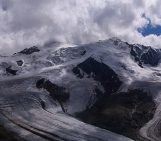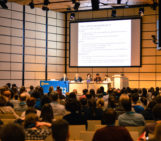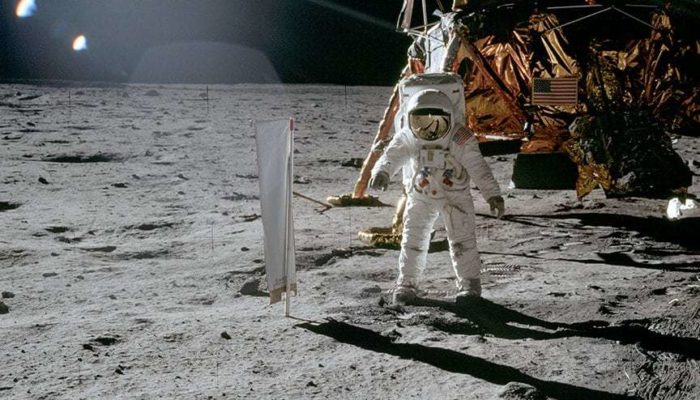
Drawing inspiration from popular stories on our social media channels, major geoscience headlines, as well as unique and quirky research, this monthly column aims to bring you the latest Earth and planetary science news from around the web.
Major story
The world soaks up the sun
This summer our planet experienced the hottest June in recorded history, with the average global temperature reaching 16.4 °C, and July is on track to becoming the hottest month ever measured on Earth. And if you either live in or have been visiting Europe over the last few weeks, it sure feels like record-breaking heat.
In both June and July, several regions in Europe reached all-time temperature highs as warm air from northern Africa made its way through the continent. A rapid analysis done by researchers affiliated with the World Weather Attribution Network shows that human-caused climate change made the June heatwave at least five times more likely to happen. Furthermore, the scientists say in their report that “every heat wave occurring in Europe today is made more likely and more intense by human-induced climate change.”
Heatwaves this intense can put human health at risk and even be deadly in severe cases. A death toll reported that extreme heat Europe in the summer of 2003 led to more than 70,000 deaths throughout the continent.
The heatwave is now advancing towards Greenland, scientists report, and increased heat in the Arctic will likely lead to “another major peak in melt area,” said Twila Moon, a research scientist with the National Snow and Ice Data Center (NSIDC) in Colorado, US, to Live Science.
Simultaneous to the heatwave, a new study has reported that Earth’s current global warming is the only worldwide climate event to have happened in the last 2,000 years. While there have been notable climate events within the last few centuries, such as dramatic temperature changes from volcanic eruptions, the impact of these events were more regional rather than universal. In contrast, the study finds that modern climate change has affected 98 percent of the world. “Absolutely nothing resembling modern-day global warming has happened on Earth for at least the past 2,000 years,” said the Atlantic.
50 years since one small step
20 July 2019 also marked the 50th anniversary of the first human steps on the Moon. In 1969, NASA astronauts Neil Armstrong and Buzz Aldrin landed on the Moon’s surface as part of the Apollo 11 Mission, revolutionising our understanding of our closest cosmic neighbor. For the 21 hours and 36 minutes on the lunar landscape, Armstrong and Aldrin reported field observations, installed instruments for multiple experiments, and gathered more than 20 kilograms of rock and dust samples.
Since then, scientists have made several discoveries from the data collected during the Apollo 11 Mission. For example, the rocks brought back from the Moon were determined to be about 4.5 billion years old, not much older than the Earth. Geoscientists also found that rocks from the Moon were very similar chemically to those on Earth, suggesting that the two bodies could have evolved in tandem from a large impact event, a leading theory also known as the giant-impact hypothesis.
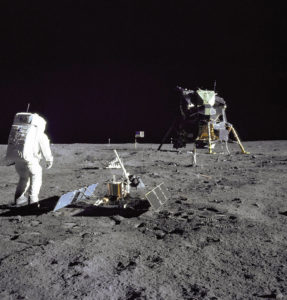
Lunar Module pilot Buzz Aldrin photographed during the Apollo 11 extravehicular activity on the moon. Aldrin had just deployed the Early Apollo Scientific Experiments Package. In the foreground is the Passive Seismic Experiment Package; beyond it is the Laser Ranging Retro-Reflector (LR-3). Credit: NASA
While operational, the lunar seismometers installed by Armstrong and Aldrin detected ‘moonquakes’ and revealed that the Moon has a relatively small solid core and a thicker crust compared to the Earths’ interior.
Armstrong and Aldrin also set up a Laser Ranging Retroreflector to precisely measure how close the Moon is to the Earth. The retroreflector is still operational to this day, and the data obtained from the experiment shows that the Moon is almost literally inching away from the Earth at 3.8 centimetres (1.5 inches) each year on average.
These examples are just some of the discoveries made following this mission, and scientists are still studying the samples and data obtained 50 years ago to learn more about the Moon, the Earth and the solar system.
“One of the biggest misconceptions is that the Apollo samples aren’t being studied anymore, and that the Apollo samples only tell us about the moon,” says Ryan Zeigler, Apollo sample curator at the Johnson Space Center, in Science News.
What you might have missed
A new study published in July reported that tidewater glaciers, ones that flow from land to sea, could be melting much faster than previously thought. By analysing detailed measurements collected through radar, sonar and time-lapse photography, a team of researchers found that one Alaskan tidewater glacier is releasing a surprising meltwater from below the surface of the ocean.
“The melt rates that we measured were about 10 to 100 times larger than what theory predicted,” says lead study author David A. Sutherland, an oceanographer at the University of Oregon, in Scientific American.
The new findings could help scientists better understand how glaciers respond to global warming and how such glacial melt contributes to sea level rise and impacts local ecosystems.
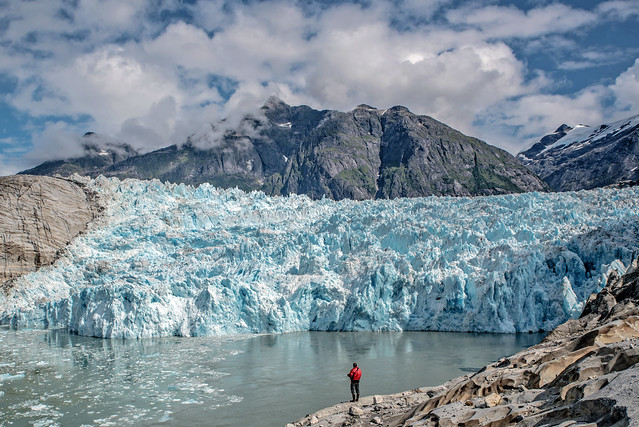
Researchers studying LeConte Glacier in Alaska have found that its melt rate was 10 to 100 times larger than expected. Credit: US Forest Service, Carey Case
Other noteworthy stories
- Wide Sargasso seaweed: 5,500-mile algae belt keeps on growing
- California earthquake leaves scar on the desert
- ‘Football pitch’ of Amazon forest lost every minute
- Ethiopia plants 350m trees in a day to help tackle climate crisis
The EGU story
In July we are advertised another vacancy at the EGU Executive Office in Munich, Germany: EGU Communications Officer. The successful candidate will manage the EGU blogs and social media channels and be the office contact point for early career scientists.
Additionally, we are providing an EGU member with the opportunity to visit Brussels and work alongside a Member of the European Parliament (MEP) for a day. The pairing scheme will enable the selected EGU member to experience the daily work of an MEP, learn more about the role of science in policymaking, and potentially provide expertise on a science-policy issue. Interested EGU members should apply by 6 September.
Also in July, we have opened the call for candidates for EGU Union President, General Secretary and Division Presidents: if you’d like to nominate yourself or propose a candidate, you can do so by 15 September.
Finally, if you’d like to apply for financial support from the EGU to organise a meeting, make sure to submit an application by 15 August. This is also the deadline to submit proposals for Union Symposia and Great Debates at the EGU General Assembly 2020. The deadline for scientific sessions and short courses is 5 September.

